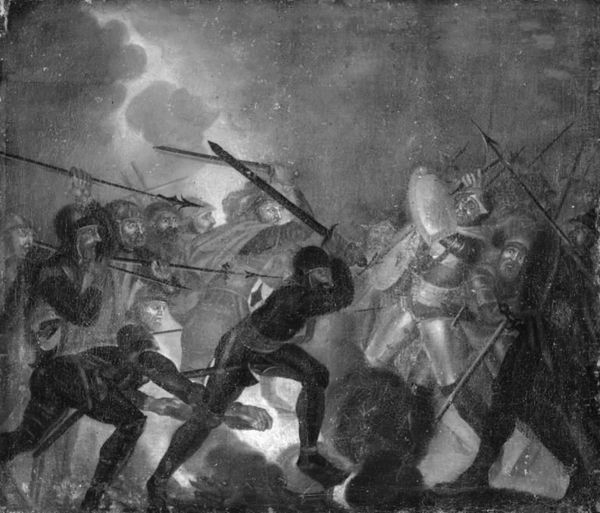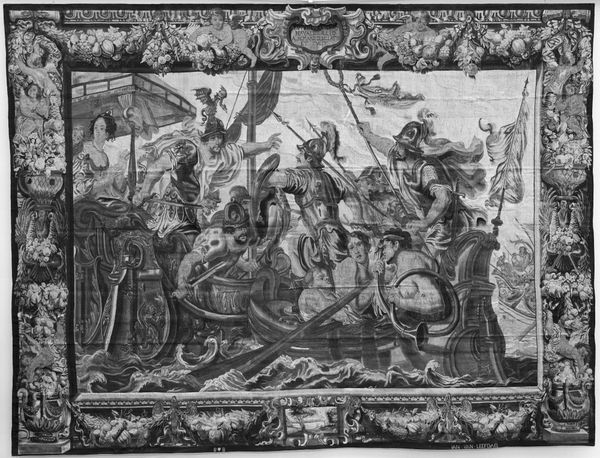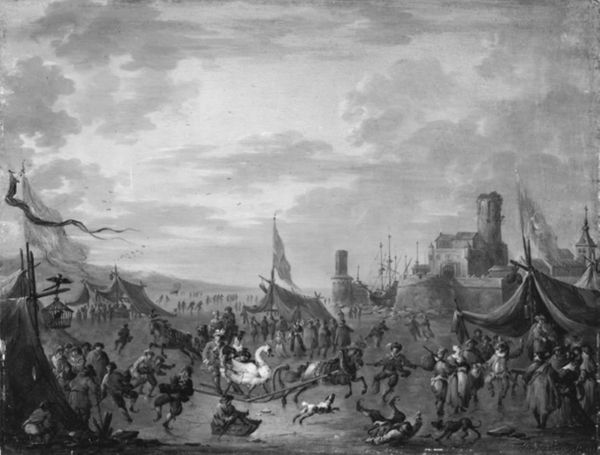
painting
#
allegories
#
allegory
#
painting
#
figuration
#
christianity
#
genre-painting
#
history-painting
#
early-renaissance
Copyright: Public domain
Curator: Here at the Louvre, we’re fortunate to house Hieronymus Bosch’s chilling panel, "The Ship of Fools", painted around 1500. Editor: What strikes me immediately is how chaotic and yet meticulously crafted it all seems. The cramped space of the boat… you can almost feel the press of bodies. Curator: Indeed. Bosch uses this imagery of a ship as a powerful, timeless allegory, representing the Church or even humanity itself, adrift in sin and folly. Notice the central mast topped not with a guiding light, but a flag and a branch with an owl, traditionally a symbol of foolishness, overseeing this voyage. Editor: Let’s consider the material context: panel painting. Each brushstroke is purposeful, building these distinct figures layer upon layer, it reminds us that Bosch wasn't just creating an image, he was constructing a physical object through labor. This affects the texture and imbues it with certain degree of craft. Look how rough that mast is! Curator: Absolutely. And each figure, despite its caricature, represents a different type of sin. The gluttonous monk guzzling wine, the lute player serenading to emptiness, those attempting to grab food instead of offering help. All consumed by their base desires. Consider how Bosch’s cultural knowledge informed this imagery of the "Ship of Fools," stemming from a popular satirical work. The painting brings that social commentary alive. Editor: The restricted palette emphasizes the grimy reality of the situation. It isn't idealizing, nor trying to appeal— it feels as though the material of this artwork itself is part of the judgement. This reinforces the themes of corruption and degradation; from how the figures are drawn, up to the very stuff it’s been painted with! Curator: It serves as a visual sermon, meant to remind viewers of their own morality and the dangers of unchecked vice. Even now, centuries later, it has a potent psychological impact, stirring feelings of discomfort. Editor: To me, considering materiality makes it more than an abstract concept— it becomes tangible and urgent. Like any vessel at sea, it requires care to function. It underscores not just symbolic failure, but concrete human neglect and misjudgment. Curator: Bosch masterfully created a powerful moral lesson for both the religious and the nonreligious, using universally recognizable imageries. Editor: "The Ship of Fools" reveals the intertwined and reciprocal relationship between symbol, material, and human failings— reminding that artistic expressions always have embedded consequences.
Comments
No comments
Be the first to comment and join the conversation on the ultimate creative platform.













